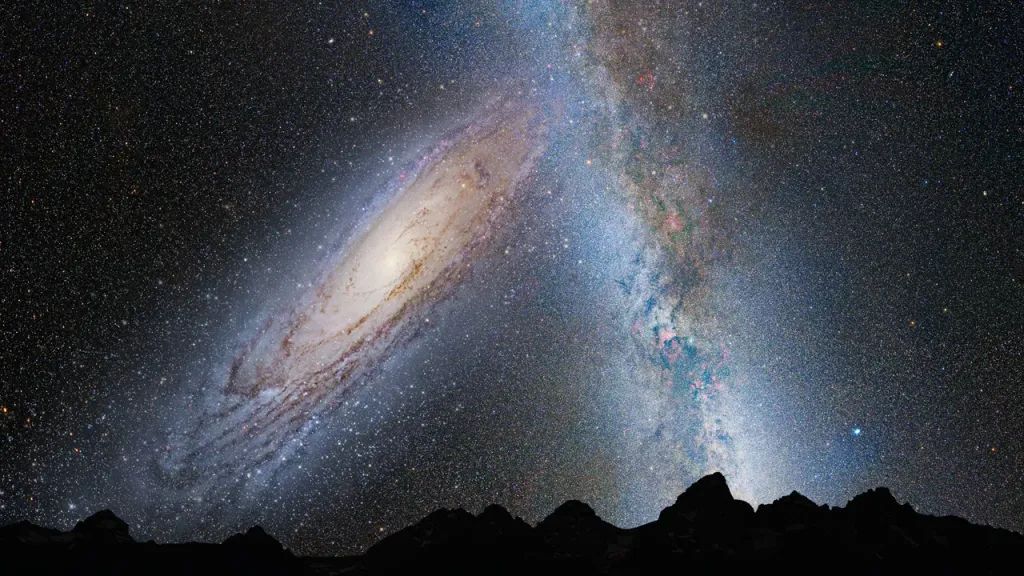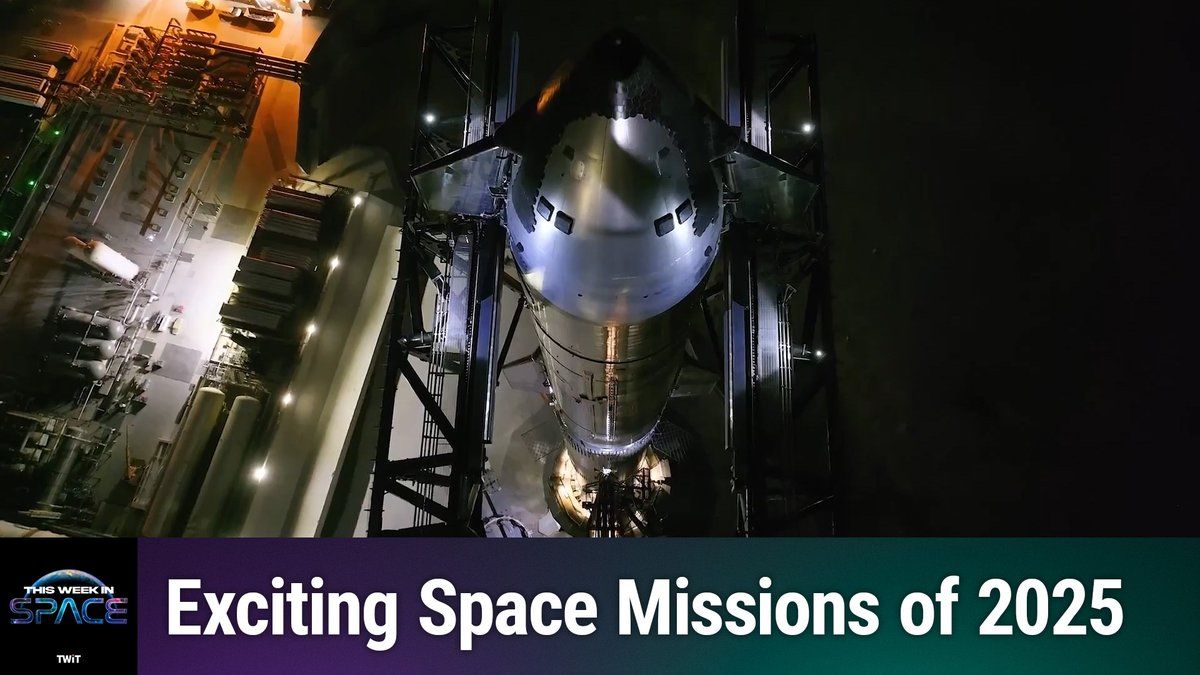Astronomers have long considered it inevitable that our home galaxy, the Milky Way, will merge with the neighboring Andromeda galaxy within the next 5 billion years. However, a new simulation suggests the chance of this clash happening comes down to a coin flip — at least, within the next 10 billion years.
“I would say that the popular narrative is diminished, but not eliminated,” Manasvi Lingam, an astrobiologist at Florida Institute of Technology who was not involved with the new study, told Space.com.
At about 2.5 million light-years from our planet, the Andromeda galaxy, or Messier 31, is the nearest large galaxy to the Milky Way. By studying Andromeda’s motion through telltale signs from the light it emanates, astronomers first predicted back in 1912 that the galaxy is on a collision course with our own Milky Way, approaching at a speed of 68 miles per second (110 kilometers per second). Later studies guaranteed the two galaxies will collide head-on and become locked in a cosmic dance, eventually fusing into a single elliptical galaxy, which was dubbed “Milkomeda.”
Such mergers were a common spectacle between 6 billion and 10 billion years ago, and have shaped the galactic landscape of our universe. While our own galaxy sports remnants of past cannibalism, its fate is difficult to predict with certainty because measurements of the positions, motions and masses of the two galaxies are not strongly constrained — and that’s even with the latest and most precise observational data, according to the new study, which was led by astronomer Till Sawala of the University of Helsinki in Finland.
Related: Andromeda galaxy crash triggered a mass galactic migration 2 billion years ago
Additionally, previous works did not fully factor in the gravitational effects of nearby, smaller galaxies, which “distinctly and radically” affect the Milky Way-Andromeda orbit and may be strong enough to push the two galaxies away from their collision path, according to the new preprint paper. These uncertainties “leave room for drastically different outcomes” and a 50% probability of no collision between the two galaxies, the researchers wrote. “As it stands, proclamations of the impending demise of our galaxy appear greatly exaggerated.”
Using recent observations of nearby galaxies collected by Gaia and Hubble space telescopes, Sawala and his colleagues simulated possible scenarios for the evolution of the Local Group in which the Milky Way and the Andromeda reside along with several other galaxies.
When the simulations included the Triangulum Galaxy (M33) — the next most massive member of our galactic neighborhood — the chances of a merger increased. However, when the simulation incorporated the orbit of the Large Magellanic Cloud, which runs perpendicular to the orbit connecting the two fated galaxies, the merger was less likely within the next 10 billion years, the researchers found.
“If there is no merger, the two galaxies would pass at some distance from each other,” said Lingam. Depending on just how much that distance is, some of the outer regions of each galaxy may get disrupted and flung out into space. The new study still allows for a 50% chance of collision, however, which Lingam emphasized is not a negligible probability. Even in a full-fledged collision, he said, the direct effects on any single planetary system like our own ought to be small. “But it must be said that much remains unknown at this stage.”
Upcoming data from the Gaia mission, which has been creating the best maps of the Milky Way to date, will provide better motion and mass estimates for our galaxy. That data may help astronomers pin down which of the neighboring galaxies have a dominating influence on the possible merger.
If the two galaxies do end up colliding billions of years from now, astronomers have predicted that our solar system would be flung into one of the outer arms of the newly merged galaxy. Stars catapulted into space would leave behind spectacular tails, while gas and dust squeezed into clouds would set off bursts of star formation. The two galaxies would coalesce with little chaos for the most part, given the swaths of empty space within them. Our accelerating universe would pull distant galaxies farther away from our vicinity, such that in about 10 billion years following the merger, Milkomeda would become our entire visible universe.
By then humanity will be long dead — at least on Earth, because a ballooning sun will have boiled our planet to inhabitability eons before the much-anticipated apocalypse.
The paper can be viewed as a preprint on the paper repository arXiv.





















Discussion about this post